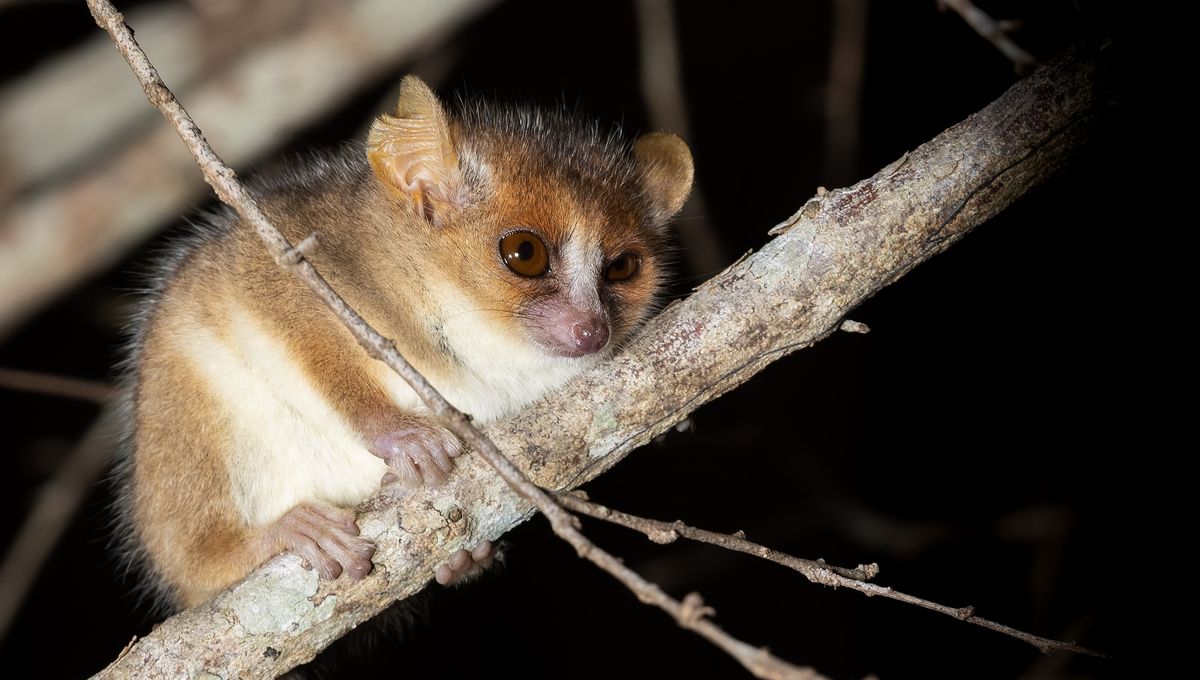
Primates can get pretty big. Just look at gorillas – absolute units. But what about the other side of the spectrum? Well, you might just have to put on your glasses – there can be found Madame Berthe’s mouse lemur, and it really is teeny tiny.
The rest of this article is behind a paywall. Please sign in or subscribe to access the full content.
We’re not kidding; this mouse lemur measures in at just 9 to 9.5 centimeters (3.5 to 3.7 inches) in body length, though you can add an extra 12 to 14 centimeters (4.7 to 5.5 inches) if you throw in the tail. This makes it the smallest primate species in the world.
They were first discovered in 1992 in Madagascar, where they live in the dry, deciduous forests found in the country’s southwestern Menabe region. Here, Madame Berthe’s mouse lemurs spend their time up in the trees, much of it on their own; while they do sleep in groups some of the time, they go it alone for the rest, and they stay solitary when it comes to foraging, too.
While they’re known to eat insects and small vertebrates as well as fruits and flowers, the bulk of their diet is made up of “honeydew”, a sugary substance secreted by the nymphs of the planthopper Flatida coccinea. This might also explain why Madam Berthe’s mouse lemurs are only native to such a limited area; the honeydew is a waste product from the insect feeding on a specific species of liana (a kind of woody vine) that’s only found in the forests where the lemurs live.
These forests, however, are in danger – and so are Madam Berthe’s mouse lemurs as a result. The biggest continuing threat to the species is habitat loss and degradation, caused by the practice of slash-and-burn agriculture, harvesting trees for coal production, and illegal logging.
Solving this problem isn’t as easy as banning deforestation, however. It’s a complex situation involving poverty, only made worse during the COVID-19 pandemic when alternative sources of money like tourism dried up. Lack of effective law enforcement in what should be protected areas also presents a significant issue.
It’s a problem that conservationists are keen to solve, because the population of Madame Berthe’s mouse lemurs has continued to decline – if it hasn’t already disappeared entirely.
In 2022, despite long-term monitoring, a research team from the German Primate Center reported that the lemur may well have gone extinct.
“Our monthly population monitoring failed to record any sightings or trappings of M. berthae in an 80 [hectare] study area since 2018, even though they used to be common there,” the team wrote in a study detailing their findings (or lack thereof). “Although it is impossible to prove that M. berthae has actually gone extinct while there is still forest left, these data are alarming and suggest that it may now be the first lemur species to have gone extinct in the 21st century.”
Even if it hasn’t yet gone extinct, things still aren’t looking good. The IUCN lists the species as “Critically Endangered” and estimates that it could be lost by as soon as 2030.
Source Link: Meet Madame Berthe’s Mouse Lemur, The World’s Smallest Primate